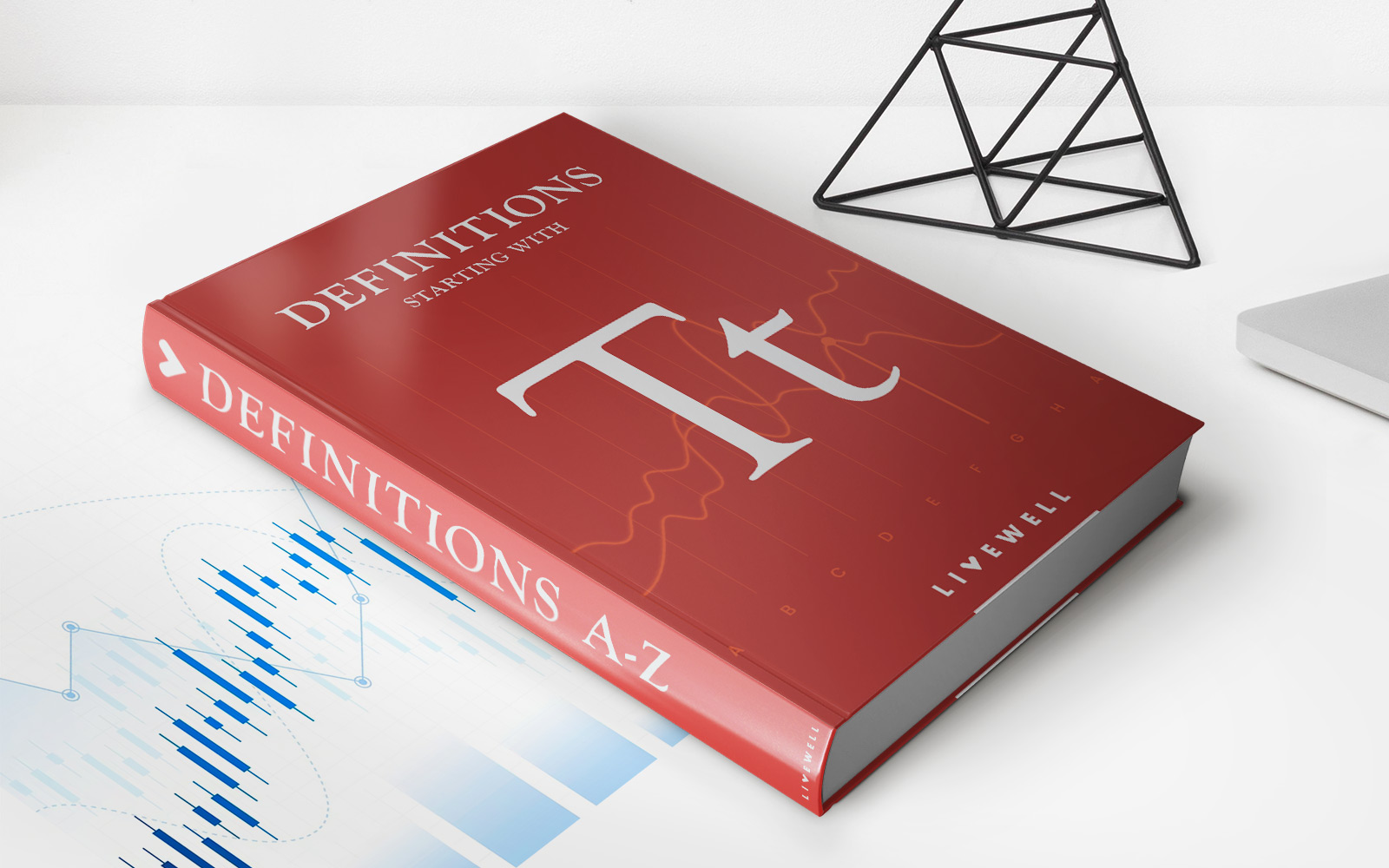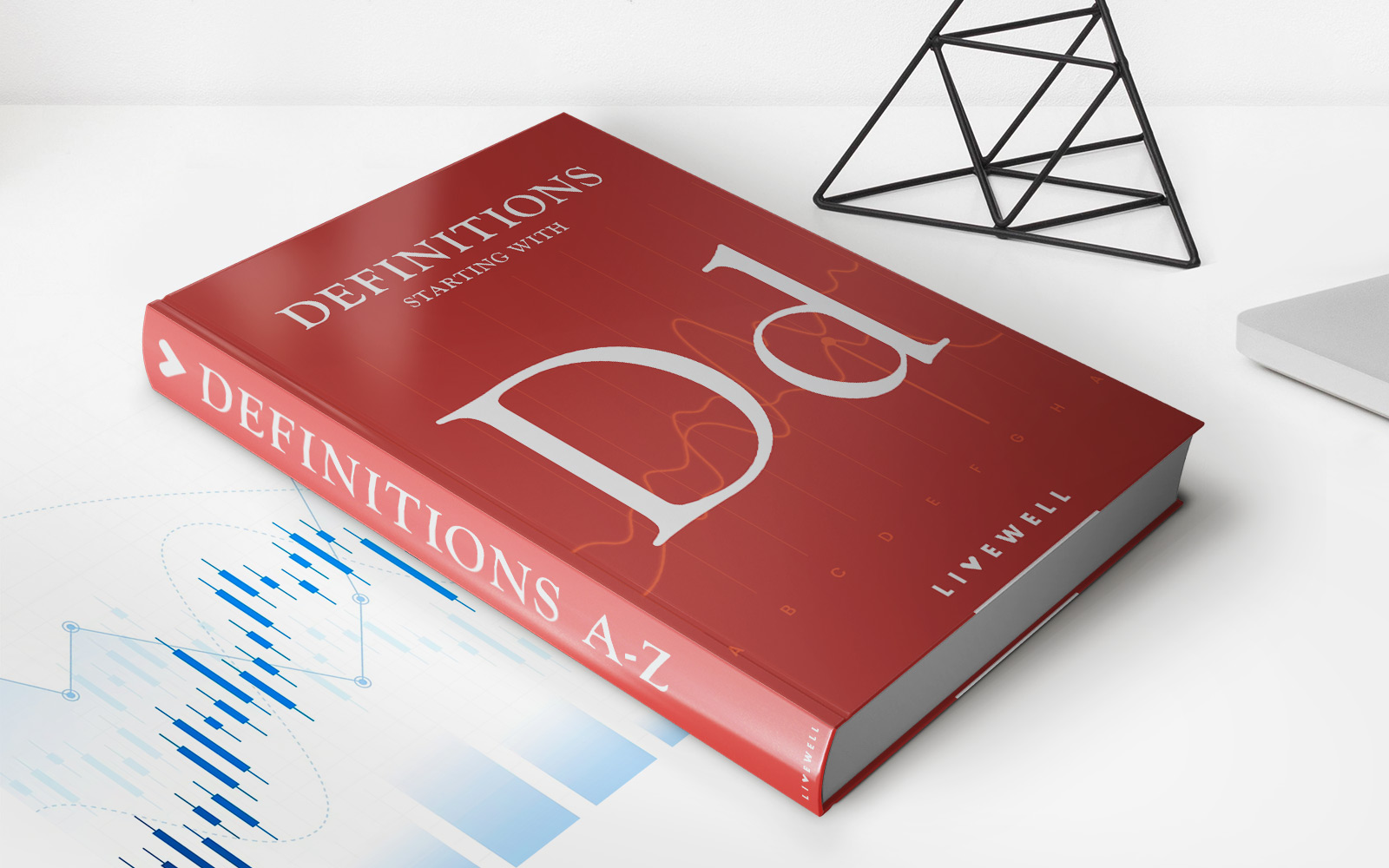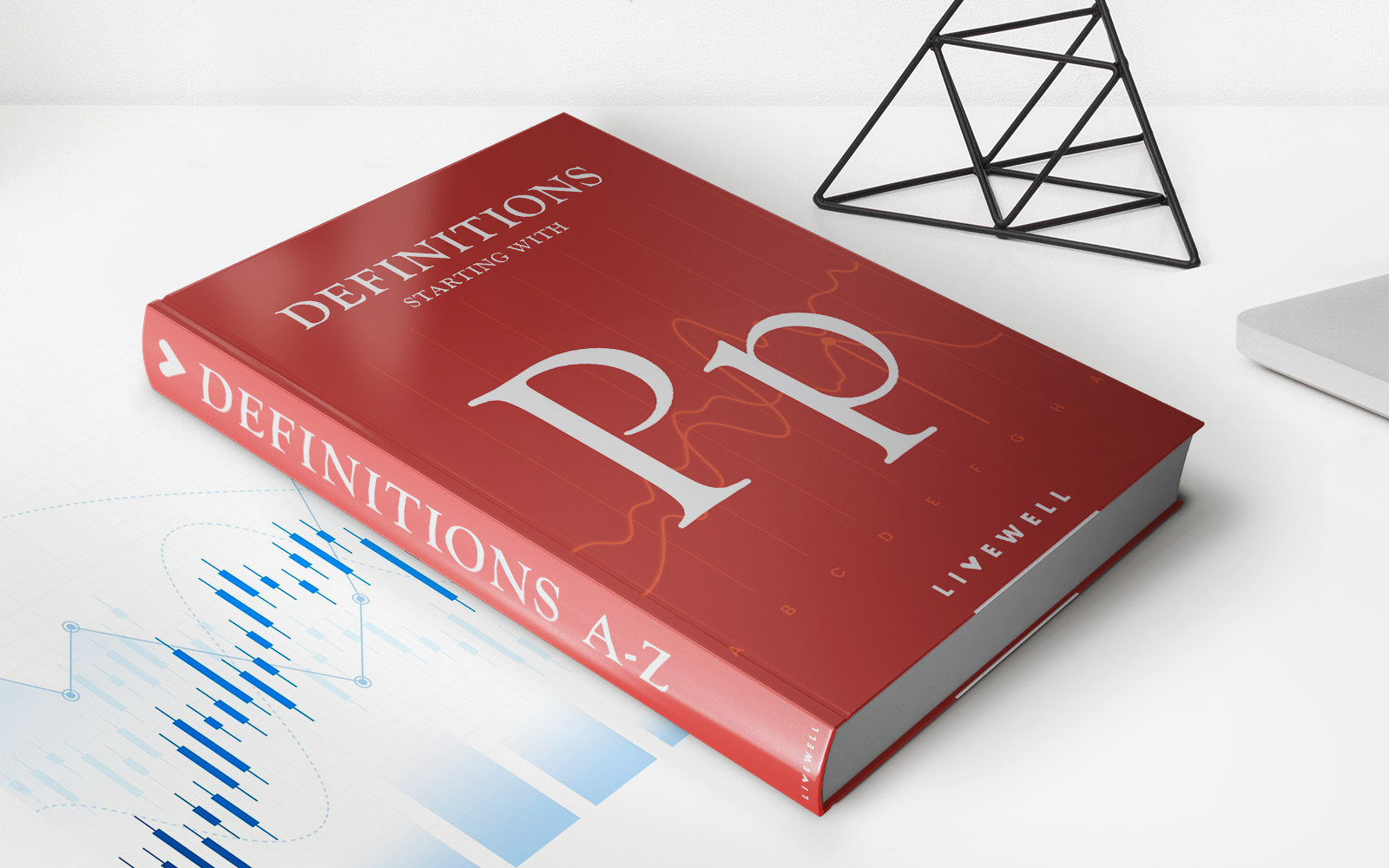

Finance
What Does Level Term Life Insurance Mean?
Published: October 16, 2023
Learn the meaning of level term life insurance and its importance in your financial planning. Find out how it can provide financial security for your loved ones.
(Many of the links in this article redirect to a specific reviewed product. Your purchase of these products through affiliate links helps to generate commission for LiveWell, at no extra cost. Learn more)
Table of Contents
- Introduction
- Understanding Life Insurance
- What is Term Life Insurance?
- Level Term Life Insurance Explained
- Features and Benefits of Level Term Life Insurance
- Pros and Cons of Level Term Life Insurance
- Is Level Term Life Insurance Right for You?
- How to Choose the Right Level Term Life Insurance Policy
- Conclusion
Introduction
Life insurance is an essential financial tool that provides protection to your loved ones in the event of your passing. It ensures that they are financially secure and can maintain their standard of living even when you are no longer around. There are various types of life insurance policies available, each with its own unique features and benefits. One of the most common and popular types is term life insurance.
Term life insurance provides coverage for a specified period, usually ranging from 10 to 30 years. Unlike permanent life insurance policies such as whole life or universal life, which provide coverage for the entire lifetime of the insured individual, term life insurance offers protection for a specific term. It is often considered a cost-effective option, especially for individuals who have specific financial needs during a specific period, such as paying off a mortgage, funding their children’s education, or replacing lost income.
Within the realm of term life insurance, there is a specific type called level term life insurance. This form of coverage is designed to provide a consistent level of coverage and premium payments throughout the policy term. In other words, the death benefit and premium remain unchanged over the duration of the policy.
Level term life insurance offers individuals peace of mind by providing a predictable and steady source of coverage. The fixed premiums make it easier to budget for and ensure that the policyholder’s loved ones are provided for in the event of their death.
In this comprehensive guide, we will explore the concept of level term life insurance in detail. We will delve into its features, benefits, pros and cons, and help you determine whether it is the right type of coverage for you. Additionally, we will provide guidance on how to choose the right level term life insurance policy that aligns with your financial goals and needs.
Understanding Life Insurance
Before delving into the specifics of level term life insurance, it is important to have a clear understanding of life insurance as a whole. Life insurance is a contract between an individual (the policyholder) and an insurance company. The policyholder pays regular premiums to the insurance company, and in return, the insurance company provides a death benefit to the designated beneficiaries upon the policyholder’s death.
The primary purpose of life insurance is to offer financial protection and support to the policyholder’s dependents or beneficiaries in the unfortunate event of their passing. This support can help cover various expenses such as funeral costs, outstanding debts, ongoing living expenses, and future financial needs.
There are several types of life insurance policies, each with its own unique features and benefits. Broadly speaking, life insurance can be categorized into two main types: term life insurance and permanent life insurance.
Term life insurance provides coverage for a specified period, such as 10, 20, or 30 years. It offers a straightforward approach to life insurance, providing a fixed death benefit to the beneficiaries if the policyholder passes away during the term of the policy. Term life insurance is typically more affordable and accessible to a wider range of individuals, making it a popular choice.
On the other hand, permanent life insurance offers coverage for the entire lifetime of the insured individual. This includes policies like whole life insurance and universal life insurance. Permanent life insurance not only provides a death benefit but also includes a cash value component that accumulates over time. This cash value can be accessed by the policyholder during their lifetime, offering an additional financial tool.
When considering life insurance, it is crucial to assess your personal and financial circumstances. Factors such as your age, health, family situation, and long-term financial goals can influence the type and amount of coverage you may require.
Now that we have established a basic understanding of life insurance, let’s explore the concept of term life insurance in more detail, focusing specifically on level term life insurance.
What is Term Life Insurance?
Term life insurance is a type of life insurance policy that provides coverage for a specified period, commonly known as the “term.” Unlike permanent life insurance policies, term life insurance does not build cash value and is designed to offer pure death benefit protection. The policyholder pays regular premiums throughout the term, and if they pass away during the term, the insurance company pays out a death benefit to the designated beneficiaries.
Term life insurance is known for its simplicity and affordability relative to other types of life insurance policies. It offers budget-friendly premium options, making it accessible to a wide range of individuals, including young families, individuals on a tight budget, and those with specific financial obligations during a particular period.
The term duration for a term life insurance policy can vary, typically ranging from 10 to 30 years. It’s important to choose a term that aligns with your specific needs and financial goals. Common reasons for purchasing term life insurance include:
- Protecting your family’s financial future: Term life insurance provides a safety net for your loved ones, ensuring that they are financially secure if you were to pass away during the term. It can cover various expenses such as mortgage payments, household bills, education costs, and everyday living expenses.
- Paying off debts: Term life insurance can be used to cover outstanding debts such as credit card balances, student loans, or a mortgage, so that your loved ones are not burdened with these financial obligations.
- Income replacement: If you are the primary breadwinner in your family, term life insurance can replace lost income and help maintain your family’s standard of living in your absence.
- Business protection: Term life insurance can also be used to protect business interests, ensuring that your business can continue to operate smoothly even after your passing.
It’s important to note that term life insurance coverage only lasts for the specified term. If the policyholder outlives the term, the coverage expires, and no death benefit is paid out. However, some insurance companies offer options to renew the policy or convert it into a permanent life insurance policy, albeit at a higher premium.
Term life insurance is a flexible and customizable option, allowing policyholders to choose the coverage amount, the term length, and in some cases, additional riders to enhance the policy’s benefits. However, it’s essential to carefully evaluate your needs and consider factors such as your age, health, financial obligations, and long-term financial goals when determining the coverage amount and term length.
Now that we have a clear understanding of term life insurance let’s dive deeper into level term life insurance and explore its unique features and benefits.
Level Term Life Insurance Explained
Level term life insurance is a specific type of term life insurance that offers a consistent level of coverage and premium payments throughout the entire term of the policy. The death benefit, which is the amount paid to the beneficiaries upon the policyholder’s death, remains constant throughout the policy’s duration. Additionally, the premium, or the amount the policyholder pays for the coverage, also remains unchanged.
With level term life insurance, policyholders have the assurance that their coverage and premium payments will remain consistent, providing stability and predictability over the course of the policy. This can be particularly advantageous for those who want to maintain a fixed budget and prefer to know exactly what their premium obligations will be each month or year.
For example, let’s say you purchase a 20-year level term life insurance policy with a death benefit of $500,000. Throughout the entire 20-year term, the death benefit will remain at $500,000, and the premium payments will also remain the same. This ensures that the policyholder’s loved ones will receive the same level of financial protection, regardless of when the policyholder passes away during the specified term.
Level term life insurance is popular because it offers simplicity and transparency. The fixed premium payments make it easier to budget for and ensure that policyholders can consistently meet their financial obligations. This type of policy can also be beneficial for those who require coverage for a specific period, such as until their mortgage is paid off or until their children are financially independent.
It’s important to note that level term life insurance policies typically do not build cash value. This means that there is no savings component or investment aspect to these policies. The primary focus is on providing the designated beneficiaries with a lump sum payment in the event of the policyholder’s death.
One of the key advantages of level term life insurance is its affordability compared to other types of life insurance. Since the death benefit and premium remain constant throughout the term, the premiums for level term life insurance tend to be lower compared to permanent life insurance policies such as whole life or universal life.
Level term life insurance can be particularly beneficial for those who have high financial obligations during a specific period in their lives, such as paying off debts, covering education expenses, or securing income replacement. By providing a fixed death benefit and premium, policyholders can have peace of mind knowing that their loved ones’ financial needs are protected.
Now that we have explored the concept of level term life insurance, let’s delve into its features and benefits in more detail.
Features and Benefits of Level Term Life Insurance
Level term life insurance offers a range of features and benefits that make it an attractive option for individuals seeking affordable and reliable life insurance coverage. Let’s explore some of its key features and the benefits they provide:
1. Consistent Death Benefit
With level term life insurance, the death benefit remains constant throughout the entire term of the policy. This means that your beneficiaries will receive the same amount of financial protection regardless of when you pass away during the policy term. This consistency ensures that your loved ones’ financial needs are covered, providing peace of mind.
2. Stable Premium Payments
Level term life insurance policies come with fixed premium payments that remain unchanged throughout the term. This predictability allows you to budget accurately and plan for your premium payments over time. It’s an excellent choice for individuals who prefer a steady, consistent payment schedule and want to avoid surprises or fluctuations in their premium amounts.
3. Affordable Coverage
Compared to permanent life insurance policies, level term life insurance tends to be more affordable. The premiums for level term policies are generally lower, making them an accessible option for individuals on a budget or those who are primarily focused on obtaining essential coverage for a specific period.
4. Flexible Policy Terms
Level term life insurance policies typically offer a variety of term lengths, such as 10, 20, or 30 years. This flexibility allows you to choose a term that aligns with your financial goals and needs. Whether you’re looking to cover a certain financial obligation or provide long-term protection for your loved ones, level term life insurance can be tailored to suit your specific requirements.
5. Convertibility Options
Some level term life insurance policies offer the option to convert the policy into a permanent life insurance policy at a later date without the need for a medical exam. This can be beneficial if your circumstances change, and you decide that permanent coverage is more suitable for your needs. Converting the policy allows you to maintain coverage and potentially build cash value over time.
6. Estate Planning Tool
Level term life insurance can be a valuable asset in estate planning. It allows you to designate beneficiaries who will receive the death benefit payout, providing a financial legacy and support for your loved ones. The death benefit from a level term life insurance policy is generally tax-free, ensuring that your beneficiaries receive the full amount.
Overall, the features and benefits of level term life insurance make it an attractive option for individuals seeking straightforward, affordable coverage for a specific period. It offers the assurance that your loved ones will be provided for financially in the event of your passing, giving you peace of mind and the ability to plan for the future.
Now, let’s weigh the pros and cons of level term life insurance to help you make an informed decision about whether it is the right choice for you.
Pros and Cons of Level Term Life Insurance
Like any financial product, level term life insurance has its advantages and disadvantages. Understanding both the pros and cons can help you make an informed decision about whether this type of coverage is suitable for your needs. Let’s explore the pros and cons of level term life insurance:
Pros:
1. Affordable Coverage:
Level term life insurance is generally more affordable compared to permanent life insurance policies. The fixed premium payments make it easier to budget for and ensure that you can maintain your coverage without straining your finances. This affordability makes it accessible to a wide range of individuals.
2. Predictable Premiums:
With level term life insurance, the premium payments remain constant throughout the entire term of the policy. This predictability allows you to plan your budget accurately, knowing that your premium payments will not increase over time. It provides peace of mind and makes it easier to manage your financial obligations.
3. Flexible Coverage Periods:
Level term life insurance policies offer a range of coverage term options, typically ranging from 10 to 30 years. This flexibility allows you to tailor the coverage duration to suit your specific needs and financial goals. Whether you want coverage until your mortgage is paid off or until your children are financially independent, you can select a term that aligns with your requirements.
4. Death Benefit Protection:
With level term life insurance, your beneficiaries are guaranteed a consistent death benefit payout in the event of your passing during the term of the policy. This financial protection can help your loved ones cover various expenses, such as mortgage payments, education costs, and daily living expenses, ensuring their financial stability.
5. Convertibility Options:
Some level term life insurance policies offer the option to convert the policy into a permanent life insurance policy without the need for a medical exam. This can be advantageous if your circumstances change, and you decide that a permanent policy better suits your needs. The convertibility feature allows you to maintain coverage and potentially build cash value over time.
Cons:
1. Limited Coverage Term:
The coverage provided by level term life insurance is limited to the specified term. If you outlive the term, the coverage expires, and there is no death benefit paid out. This can be a disadvantage if you are seeking lifelong coverage or anticipate needing coverage later in life.
2. No Cash Value:
Level term life insurance policies do not build cash value over time. Unlike permanent life insurance policies, there is no savings or investment component to the policy. If you are looking for a policy that accumulates cash value that you can access during your lifetime, level term life insurance may not be suitable.
3. Premiums May Increase Upon Renewal:
While the premiums for level term life insurance remain constant throughout the initial term, some policies may offer the option to renew the coverage at the end of the term. However, the renewal premiums may be significantly higher, especially if your health has changed or you are older. It’s important to factor in potential premium increases if you plan to renew your policy.
Considering both the pros and cons of level term life insurance can help you determine whether this type of coverage aligns with your financial goals, budget, and long-term needs. It is essential to evaluate your unique circumstances and consult with a financial advisor or insurance professional to make an informed decision.
Next, let’s discuss whether level term life insurance is the right choice for you and how to select the appropriate policy.
Is Level Term Life Insurance Right for You?
Deciding whether level term life insurance is the right choice for you depends on various factors, including your financial situation, goals, and personal circumstances. Here are some key considerations to help you determine if level term life insurance aligns with your needs:
1. Temporary Financial Protection:
If you have specific financial obligations that are temporary in nature, such as paying off a mortgage, funding your children’s education, or covering outstanding debts, level term life insurance can be a suitable option. It provides coverage for a fixed term, ensuring that if you were to pass away during that period, your loved ones would receive a lump sum payout to handle these financial responsibilities.
2. Cost-Conscious Budget:
Level term life insurance is known for its affordability compared to permanent life insurance options. If you have a limited budget or prefer to allocate your resources to other financial goals, level term life insurance offers essential coverage at a more affordable price point. The fixed premium payments make it easier to plan and budget for your insurance costs.
3. Support for Dependents:
If you have dependents who rely on your income to meet their financial needs, level term life insurance can provide crucial financial support in the event of your passing. It helps ensure that your loved ones can maintain their standard of living, cover everyday expenses, and achieve their long-term goals even without your income.
4. Flexibility in Coverage Term:
Level term life insurance policies offer flexibility in choosing the coverage term. You can tailor the policy duration to align with your specific needs, whether it’s until your children reach adulthood, until your mortgage is paid off, or until you anticipate becoming financially self-sufficient. The ability to customize the term length ensures that you have coverage when you need it most.
5. Preference for Fixed Premiums:
If you value predictability and want to avoid fluctuations in premium payments, level term life insurance provides a stable payment schedule. The premiums remain unchanged throughout the entire term, allowing you to plan your budget accurately and ensuring that your insurance costs fit within your financial means.
It’s important to note that level term life insurance may not be the best fit for everyone. If you require lifelong coverage, cash value accumulation, or more advanced estate planning options, you may need to explore other types of life insurance policies such as permanent life insurance or consider a combination of policies to meet your specific goals.
Ultimately, assessing your financial situation, future obligations, and desired level of protection is crucial in determining whether level term life insurance is right for you. Consulting with a licensed insurance professional can provide personalized guidance and help you make an informed decision based on your unique needs and circumstances.
Now, let’s discuss how to choose the right level term life insurance policy that meets your requirements.
How to Choose the Right Level Term Life Insurance Policy
Choosing the right level term life insurance policy requires careful consideration and evaluation of your specific needs, financial goals, and circumstances. Here are some key factors to consider when selecting the right policy:
1. Determine the Coverage Amount:
Start by evaluating your financial obligations and future needs. Consider factors such as outstanding debts, mortgage, children’s education expenses, and income replacement. Calculate the amount of coverage necessary to adequately protect your loved ones in your absence. This will help you determine the death benefit you should aim for in your level term life insurance policy.
2. Assess the Term Length:
Think about the duration of coverage you require. Assess the length of time it will take to fulfill your financial obligations or support your dependents. For example, if you have young children, you may want a policy that covers you until they reach adulthood. Matching the term of the policy to your specific needs ensures that you have coverage when it is most crucial.
3. Evaluate Insurance Companies:
Research and compare different insurance companies that offer level term life insurance policies. Look for insurance providers with a strong financial reputation, solid customer reviews, and a track record of prompt claims settlements. Evaluating the reliability and credibility of the insurance company is essential for long-term peace of mind.
4. Review Policy Riders:
Consider any additional riders or options offered by the insurance company. Riders are additional coverages that can enhance your policy’s benefits. Examples include disability income rider, accelerated death benefit rider, or a rider that offers the option to convert the policy into a permanent life insurance policy later on. Assess which riders align with your needs and may provide added value to your level term life insurance policy.
5. Compare Premiums:
Obtain quotes from different insurance companies and compare the premiums associated with their level term life insurance policies. Consider your budget and ensure that the premiums are affordable and manageable for you throughout the entire term of the policy. Remember to take into account any potential premium increases upon renewal, if applicable.
6. Seek Professional Advice:
Consult with a licensed insurance professional or financial advisor who specializes in life insurance. They can provide expert guidance, assist you in assessing your needs, and help you navigate through the various policy options available. Their expertise can ensure that you make an informed decision and choose the policy that best suits your specific requirements.
When selecting a level term life insurance policy, it’s important to conduct thorough research, compare options, and carefully analyze your needs. Taking the time to assess these key factors will help you choose a policy that provides the appropriate level of coverage and financial protection for you and your loved ones.
Finally, after selecting and purchasing your level term life insurance policy, regularly review your coverage to ensure that it continues to meet your evolving needs and goals. Life changes, such as marriage, the birth of a child, or changes in financial circumstances, may require adjustments to your coverage.
Now that you have a better understanding of how to choose the right level term life insurance policy, you are equipped to make an informed decision and secure the protection your loved ones deserve.
Conclusion
Level term life insurance is a popular and cost-effective option for individuals seeking reliable and affordable coverage for a specific period. It offers a consistent death benefit and stable premium payments throughout the policy term, providing peace of mind and financial protection for your loved ones.
By understanding your financial obligations, determining the coverage amount and term length that align with your needs, and evaluating different insurance companies and policy options, you can choose the right level term life insurance policy for your situation.
While level term life insurance may not be suitable for everyone, it offers numerous benefits, including affordability, predictable premiums, and flexibility in coverage duration. It provides crucial support for your dependents, helps cover specific financial obligations, and acts as a valuable estate planning tool.
It’s important to remember that life insurance needs evolve over time, so regular review and reassessment of your coverage is essential. Life changes, such as marriage, the birth of a child, or changes in financial circumstances, may necessitate adjustments to your policy to ensure adequate protection.
If you are considering level term life insurance, consult with a licensed insurance professional or financial advisor who can provide expert guidance tailored to your unique needs and circumstances. They can help you navigate the options, answer your questions, and ensure you make an informed decision regarding your life insurance coverage.
Choosing level term life insurance is a significant step towards protecting your loved ones’ financial future. With the right policy in place, you can have peace of mind knowing that your family will be supported even if you’re no longer there to provide for them.
Take the time to assess your needs, compare options, and seek professional advice. By doing so, you can select a level term life insurance policy that offers the coverage, stability, and financial protection you and your loved ones deserve.
Investing in level term life insurance today can bring security and certainty to your family’s tomorrow.














